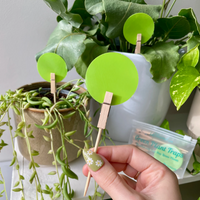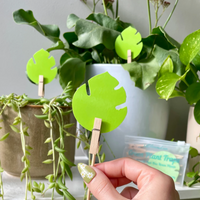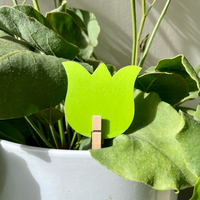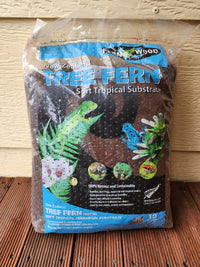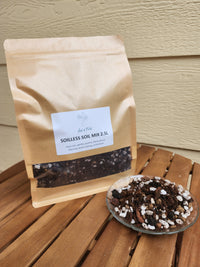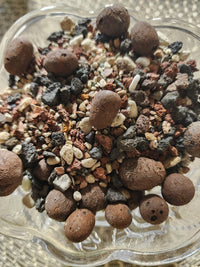The ZZ plant (Zamioculcas zamiifolia), with its elegant, deep green foliage, is a popular choice for beginner plant parents. Known for its resilience and low-maintenance needs, it's often considered a "set it and forget it" or “thrives on neglect” kind of plant. However, even ZZ plants can encounter some issues along the way. Don't fear! By identifying the problem and taking corrective action, you can get your ZZ plant back on track to thriving.

Here are some common ZZ plant problems and solutions to keep your emerald gem shining:
- Brown Leaves:
- Cause: The culprit behind brown leaves can be either underwatering or overwatering.
- Underwatering: If the brown leaves are dry and crispy, especially on the lower part of the plant, your ZZ might be thirsty.
- Overwatering: Mushy brown leaves are a sign of overwatering. Excess water can lead to root rot, a serious condition.
- Solution: For underwatering, give your plant a thorough soak when the soil feels dry. To accurately measure this, it is recommended to use a moisture meter. Insert your moisture meter into the soil, if the reading says the soil is dry, it’s time to water. If it’s still indicating that the soil is moist/wet, then we need to wait. When you do water, ensure excess water drains freely through the pot's drainage holes. For overwatering, stop watering immediately and allow the soil to dry out completely. It would be a good idea to repot the ZZ plant in fresh, well-draining soil if root rot is suspected.

- Droopy Leaves:
- Cause: This is usually a sign of overwatering. When the ZZ plant doesn't get enough oxygen to its roots due to soggy soil, the leaves will start to droop.
- Solution: Stop watering immediately and allow the soil to dry out completely. If the pot lacks drainage holes, repot the plant in a pot with proper drainage and a well draining soil.
- Slow Growth or Lack of New Leaves:
- Cause: This could be due to insufficient light, lack of fertiliser, or the plant being rootbound.
- Light: While ZZ plants tolerate low light, they may not produce new growth in extremely dark conditions. This is the case with most low light tolerant plants. Therefore, it is important that your plant is getting the light it needs to grow.
- Fertiliser: ZZ plants are not heavy feeders, but a light application of balanced fertiliser can encourage growth.
- Rootbound: If your ZZ plant has been in the same pot for several years, it might be rootbound, meaning the roots have outgrown the pot.
- Solution: If insufficient light is suspected, try moving the plant to a location with brighter indirect light. Avoid direct sunlight. Consider using grow lights for a few hours a day if natural light is scarce. Without sufficient light the plant will struggle to grow. For slow growth due to lack of fertiliser, use a well balanced fertiliser once a month during the growing season (spring and summer) and less frequent during autumn and winter. Even though several sites will say to feed your plant only during the growing season, it is important that they are also fed during autumn and winter. However, you could cut back on the frequency of fertilising. Reason being, plants will still grow during the colder weather, it will just be at a slower rate. If the plant is rootbound, repot it in a slightly larger pot with fresh, well draining soil. For most indoor plants, it is important that the soil used is well draining to minimise root rot.

Pro Tip: Using Clear Pots for Early Detection
Using clear pots can be a helpful tool for ZZ plant care or any indoor plant for that matter. By being able to see the roots, you can easily monitor for root rot, check for root boundness or whether your plant needs watering or not before any of these issues become severe.
Remember:
- Always use a well-draining potting mix when planting or repotting your ZZ plant.
- Use fertiliser as per instructions. Natural fertilisers are a great choice.
- Less is often more when it comes to watering ZZ plants. Stay on the side of underwatering rather than overwatering. To get your watering right, enlist the help of a good quality moisture meter.
By following these tips and addressing any problems promptly, you can ensure your ZZ plant continues to bring a touch of lush greenery to your home for years to come.
For all your gardening needs, explore our one-stop shop – your ultimate destination for quality soil, top-notch pruning tools, and a plethora of expert resources.


